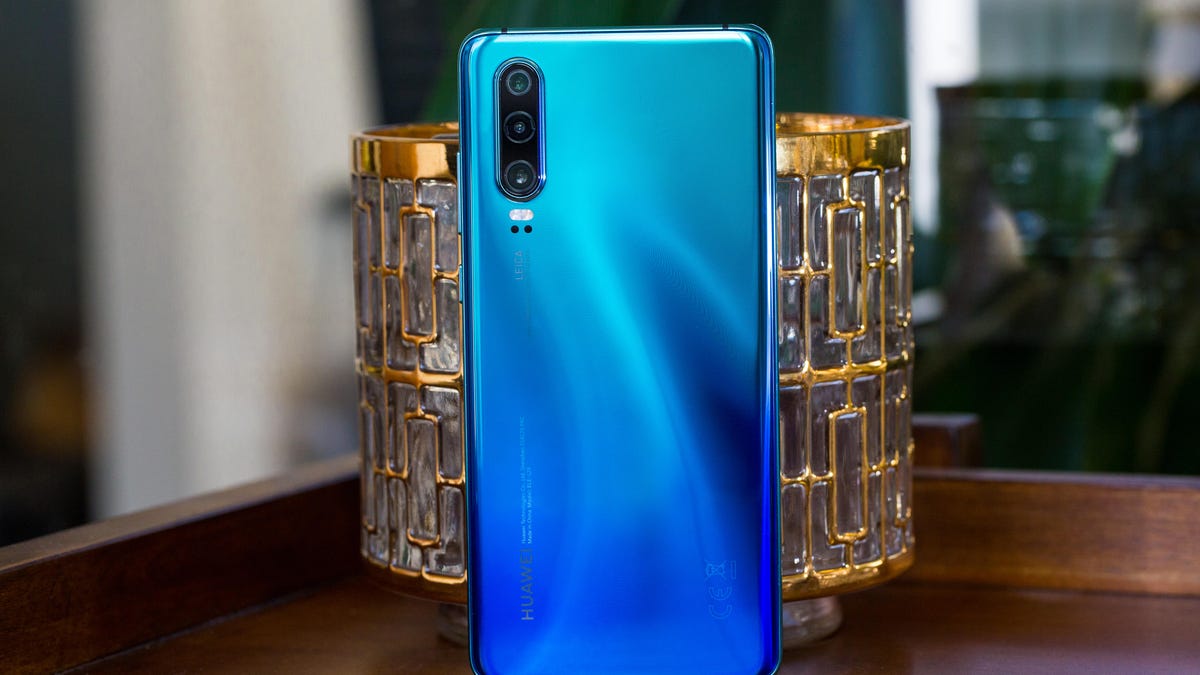Huawei P30 vs. Galaxy S10 vs. Pixel 3: Cameras, battery and all the specs
Here's where Huawei's new flagship phone fits into the competition.

The new Huawei P30 isn't just any phone. It's shaping up to be an Android powerhouse designed to challenge the Galaxy S10 and Google's Pixel 3 on nearly every front that matters: screen size, battery life and -- most important of all -- the cameras. (The even more advanced Huawei P30 Pro has four rear cameras.)
It's hard to overstate the importance of camera quality as a key consideration for phone buyers, and it isn't just automatic mode that people care about. Portrait mode, low-light shots and other tricks for making shots more artistically impressive are also wrapped into people's search for the "best" phone camera that money can buy. Phones such as the Huawei P30 and Pixel 3 have a dedicated night mode that, for some, could make them more attractive options than the Galaxy S10.
Both the P30 and Galaxy S10 have three rear cameras and one front-facing camera. Google's Pixel 3 has just one rear camera, but photo quality is excellent. Google gave it two front-facing lenses, however, and all three phones will give you portrait selfies.
The P30's megapixel count is much higher than the Galaxy S10 and Pixel 3, but remember that the amount of light that streams in and the way that the software processes photos are both more important than the number of pixels a camera has on the final effect.
One area where a large pixel count can come as an advantage is with zooming in (or cropping in) on details, but there are plenty of other phones that do a nice job of that without extremely high pixel counts.
Moving on from cameras, the Galaxy S10's ability to wirelessly charge another device -- say a phone, a watch or earbuds -- is a utility that helps Samsung's phone stand out against the Huawei P30. It's notable because the more expensive and robust P30 Pro does have this feature. Where Samsung made its Wireless PowerShare universal across all its S10 phones (even the cheapest Galaxy S10E), Huawei used it to differentiate between its two models.
Huawei P30 specs vs. Galaxy S10 vs. Pixel 3
| Huawei P30 | Samsung Galaxy S10 | Google Pixel 3 | |
|---|---|---|---|
| Display size, resolution | 6.1-inch OLED; 2,340x1,080-pixels | 6.1-inch AMOLED; 3,040x1,440-pixels | 5.5-inch "flexible" OLED; 2,280x1,080 pixels |
| Pixel density | 422 ppi | 550 ppi | 443 ppi |
| Dimensions (Inches) | 5.9x2.8x0.3 in | 5.9x2.77x0.31 in | 5.7x2.7x0.3 in |
| Dimensions (Millimeters) | 149x71.4x7.8 mm | 149.9x70.4x7.8 mm | 145.6x68.2x7.9 mm |
| Weight (Ounces, Grams) | 5.8 oz; 165 g | 5.53 oz; 157 g | 5.2 oz; 148 g |
| Mobile software | Android 9.0 with EMIU 9.1 | Android 9.0 with Samsung One UI | Android 9 Pie |
| Camera | 40-megapixel (standard), 20-megapixel (ultra wide), 8-megapixel 3x optical zoom | 12-megapixel (wide-angle), 16-megapixel (ultra wide-angle), 12-megapixel (telephoto) | 12.2-megapixel |
| Front-facing camera | 32-megapixel | 10-megapixel | Dual 8-megapixel |
| Video capture | 4K | 4K | 4K |
| Processor | Kirin 980 processor | Octa-core Qualcomm Snapdragon 855 | Qualcomm Snapdragon 845 (2.5GHz + 1.6GHz octa-core) |
| Storage | 128GB | 128GB, 512GB | 64GB, 128GB |
| RAM | 6GB | 8GB | 4GB |
| Expandable storage | Up to 256GB with proprietary NM card | Up to 512GB | None |
| Battery | 3,650 mAh | 3,400 mAh | 2,915 mAh |
| Fingerprint sensor | In-screen (optical) | In-screen (ultrasonic) | Back cover |
| Connector | USB-C | USB-C | USB-C |
| Headphone jack | Yes | Yes | No |
| Special features | Camera night mode, IP53 water resistance | Wireless PowerShare; hole punch screen notch; water resistant (IP68); Fast Wireless Charging 2.0 | IPX8, wireless charging support, Pixel Buds USB-C headphones in the box |
| Price off-contract (USD) | Converts to $920 | $900 | $799 (64GB); $899 (128GB) |
| Price (GBP) | £699 | £799 | £739 (64GB); £839 (128GB) |
| Price (AUD) | AU$1,099 | AU$1,349 | AU$1,199 (64GB); AU$1,349 (128GB) |

